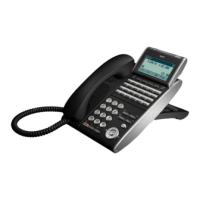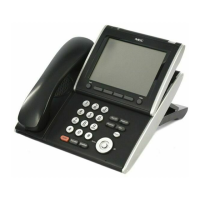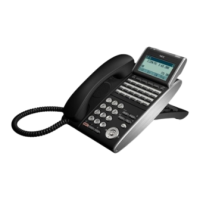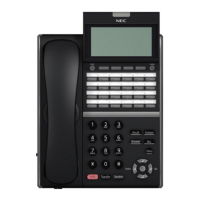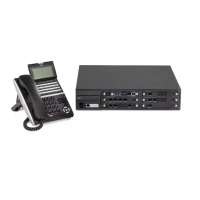Program
Number
Program Name/Description Assigned Data
11-01-01* System Numbering
Once the leading digits/digits are assigned as network
access, you must then assign them to a valid Network ID
(1~4).
Note: the 1
st
remote system would be network ID 1, the
second would be network ID 2, the 3
rd
would be network
ID 3, and the 4
th
would be network ID 5. The network ID’s
at each remote location do not have to match; they are
system dependent.
For example, if the Remote SL Net system uses exten-
sions 200 ~ 299, then digit 2 would be assigned as: (8)
Networked System Access and digit 2 would be assigned
as network ID 1.
0 = No Remote Network
1 = Remote Network 1
2 = Remote Network 2
3 = Remote Network 3
4 = Remote Network 4
(default =0)
10-27-01* Network System ID Assignment
Define the IP Address of the Remote SL Net system
where the call is routed for the system ID assigned in
PRG 11-01-01.
0.0.0.0 ~ 126.255.255.254
128.0.0.1 ~192.255.255.254
192.0.0.1 ~ 223.255.255.254
(default =0.0.0.0)
20-01-04 Network BLF Indication
Assign how often the SL2100 updates the DSS key BLF
indications for remote SL Net systems (expressed in sec-
onds).
To provide BLF lamping indications across the network,
this timer must be adjusted. NEC recommends a value of
3 seconds.
0 ~ 64800 seconds
(default =0)
10-19-01 VoIPDB DSP Resource Selection
This program is used to assign the 128 resources of the
VoIPDB.
NEC recommends leaving the default settings as system
default.
0 = Commonly used for IP extensions, trunks,
and networking
1 = Use for IP extensions
2 = Use for SIP trunks
3 = Use for networking (SL Net)
5 = Blocked
6 = Common without unicast paging
7 = Multicast paging
8 = Unicast paging
(defaults: 1 ~ 128 = Common)
10-20-01 External Equipment LAN setup
Device type 4 (networking system) must be assigned to
the same port number in ALL SL Net systems.
1 = CTI Server (default = 8181)
4 = Networking System (default = 30000)
5 = SMDR Output (default = 0)
6 = DIM Output (default = 0)
8 = UC Web Application
9 = 1st Party CTI (default = 8282)
11 = O&M Server (default = 8010)
12 = Traffic Report Output (default = 0)
13 = Room Data Output for Hotel Service (de-
fault = 0)
14 = IP-DECT Directory Access (default = 0)
15 = Presence (default = 0)
Available values are: 0 ~ 65535
90-10-01 System Alarm Setup
Two Alarms were added for SL Net and they are:
Alarm 15 – Networking keep alive error
Alarm 59 – Networking port limit exceeded
0 = No Setting
1 = Major Alarm
2 = Minor Alarm
(Refer to the SL2100 programming manual for
the default values.)
90-10-02 Report
This program is used to assign if the alarm is displayed
on a key telephone if the alarm information is reported to
the pre-defined destination.
0 = No (alarm disabled)
1 = Yes (alarm enabled)
(Refer to the SL2100 programming manual for
the default values.)
ISSUE 1.0 SL2100
Networking Manual 13-21

